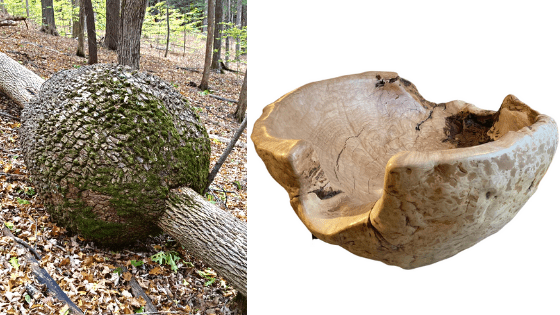Have you ever been hiking in the woods and spotted large growths on a tree and wondered, what is that? Well, THAT, my friend, would be a burl! Now your next question might be, what causes it to grow like that?
Burls typically stem from stress put upon a tree. Burls can grow in response to a disease, bug, or fungus. Looking at a burl from the outside, it may seem quite strange or even “gross," but you would be surprised by the natural beauty that lies within.

When crafting our burl sculptures and bowls, our woodworkers handle wood grain that goes in all directions, making it extremely challenging work for our highly skilled woodworkers. This diversity in burl wood grain also results in stunning and unique markings.

When hand-turning a burl, it is often a much slower process when compared to turning one of our standard bowls. There can often be weaker points in the burl wood, necessitating that a woodworker has to have patience and take the appropriate time when forming these beauties.

Until our finely crafted burls are coated in our Refined Walnut Wood Oil, ready to enter the Burl Gallery, we never know precisely how a burl will look. This sense of mystery, nature taking its course, and artistry lend themselves towards burls having a special place in the Andrew Pearce Bowls family's heart. When a burl arrives at our workshop, it might not be as a stunning, but we always come to appreciate and be in-awe of each one-of-a-kind, finished burl.









